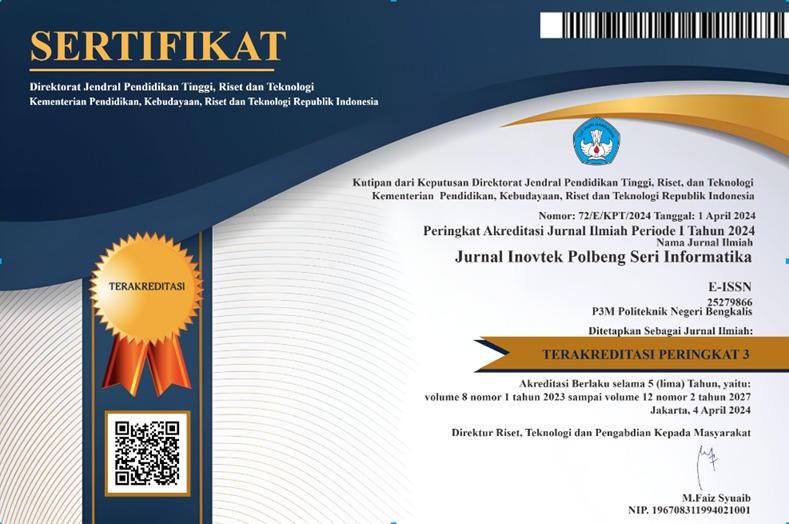Android Application Prototype for Detecting Mould on Bread using Machine Learning
DOI:
https://doi.org/10.35314/bptwhn82Keywords:
Android application, bread classification, machine learning , mould detectionAbstract
Mould contamination in bread poses a serious health risk if not detected early, especially in the food industry, which still relies heavily on manual visual inspection. This study aims to develop a prototype Android application capable of automatically detecting mould on bread using a machine learning approach based on the MobileNetV2 architecture. The classification model was trained on a dataset of 666 bread images, consisting of 533 training and 133 validation samples. Training was carried out over 37 epochs using data augmentation techniques and a learning rate of 0.0001. The results demonstrated consistent accuracy improvements and loss reductions without signs of overfitting. The model achieved 94% testing accuracy, with a precision, recall, and F1-score of 0.94 for both "Mouldy" and "Non-Mouldy" classes. The confusion matrix showed 125 correct predictions out of 133 test images. This research addresses the gap in lightweight and practical solutions for mobile-based mould detection. Unlike previous studies that used heavier models such as VGG16 or ResNet, this study shows that MobileNetV2 can achieve high performance with lower computational demands, making it suitable for real-world Android applications.
The trained model was integrated into a simple Android interface, allowing users to upload images and instantly receive classification results. For future improvement, this prototype can be enhanced by incorporating object detection or image segmentation techniques such as YOLOv5 or U-Net to enable not only classification but also the localisation of mould areas in real-time.
Downloads
Downloads
Published
Issue
Section
License
Copyright (c) 2025 INOVTEK Polbeng - Seri Informatika

This work is licensed under a Creative Commons Attribution-NonCommercial-ShareAlike 4.0 International License.














